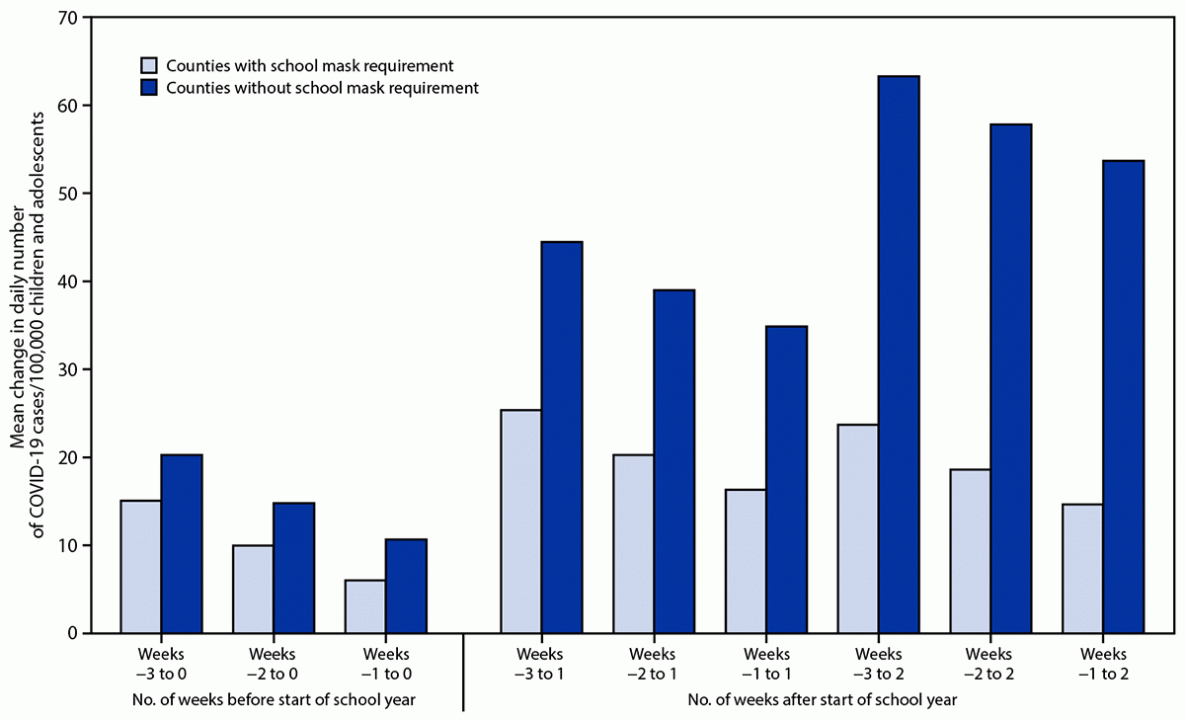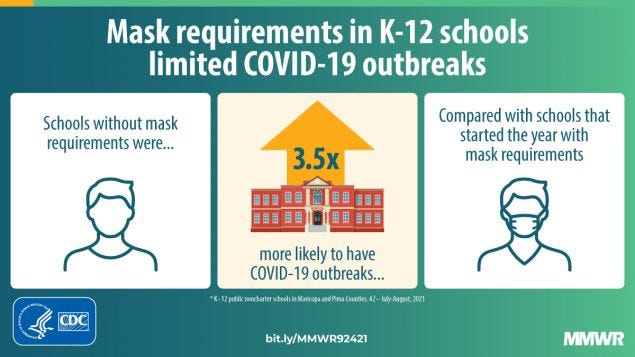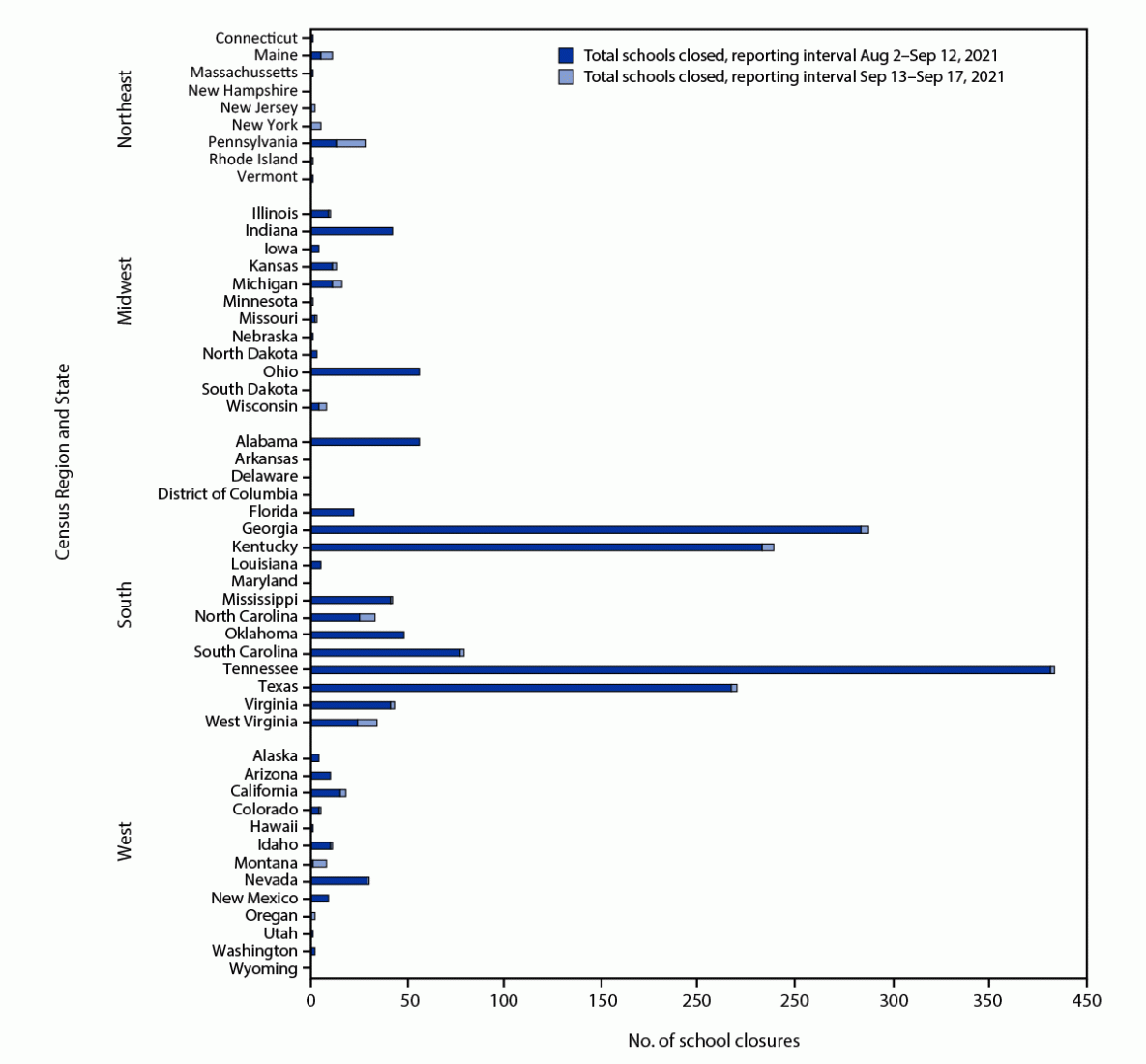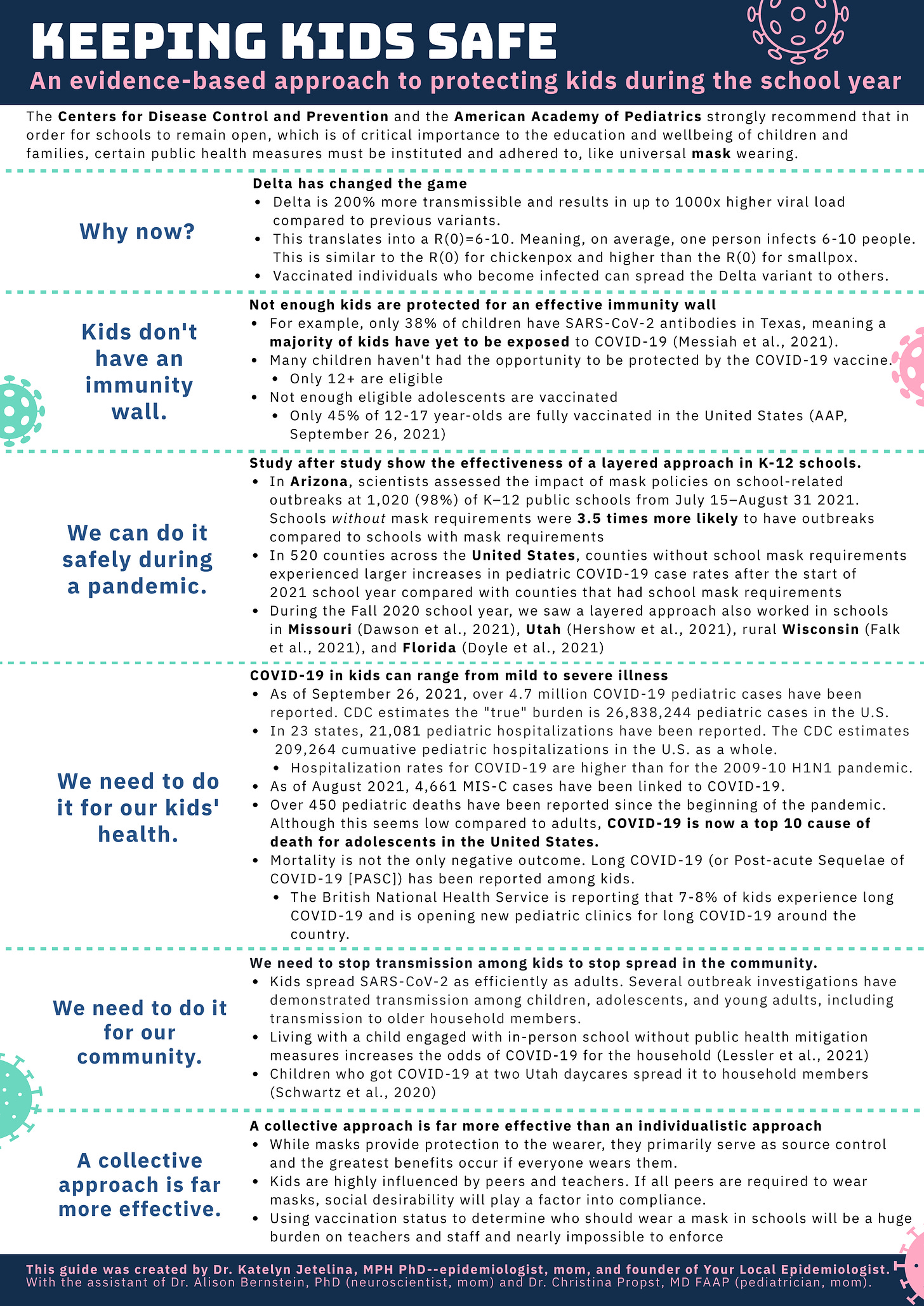Impressively, we’re already getting peer reviewed studies assessing the effectiveness of mask requirements for the Fall 2021 school year. Last week, three rigorous were released…
Impact on cases
In the first study, scientists assessed pediatric county case rates in schools with and without school mask requirements from July 1–September 4, 2021. They looked at all 3,142 U.S. counties but only analyzed schools if they had a clear mask policy (using this amazing database from MCH), had a uniform policy (all kids had to wear a mask or no kids had to wear a mask), and was open for at least 3 weeks. After applying this criteria, 520 counties across the United States were included. What did they find?
Counties without school mask requirements experienced larger increases in pediatric COVID-19 case rates compared to counties that had school mask requirements
This was even the case after the scientists controlled for confounders (took into account things like age, race and ethnicity, vaccination rate, community transmission, population density, social vulnerability index score, COVID-19 community vulnerability index score, percentage uninsured, and percentage living in poverty)
Impact on school-related outbreaks
In the second study, scientists assessed the impact of mask policies on school-related outbreaks. They studied 1,020 (98%) K–12 public schools in Arizona from July 15–August 31, 2021. At the time, transmission was high in the area (7-day case rates were 105-161 per 100,000 persons) and vaccination rates were moderate (48-59% of residents had at least 1 dose). Of the schools studied, 21% had established a mask requirement before school started (“early mask requirement”); 31% implemented a mask requirement after school started (“late mask requirement”); and 48% of schools had no mask requirement. What did they find?
There were a total of 191 school-associated outbreaks during the study period
8.4% of the outbreaks were in schools with early mask requirements; 32.5% in schools with late mask requirements; and 59% in schools without a mask requirement.
Schools without mask requirements were 3.5 times more likely to have outbreaks compared to schools with mask requirements, even after accounting for confounders (things like county, grade levels present, enrollment size, and Title I status).
School closures
And, unfortunately, the high case rates and school-related outbreaks have led to a number of closures. In a third study published last week, scientists systematically searched the internet for school and disctrict closures from August 2–September 17. What did they find?
There were 248 districtwide closures and 384 individual school closures for ≥1 day attributable to COVID-19
Closures affected 1,801 schools (1.5% of all schools), 933,913 students, and 59,846 teachers in 44 states
The South had the highest number of closures compared to other regions. Tennessee took the lead with Georgia, Kentucky, and Texas closely following.
Bottom Line: Public health mitigation measures in schools, like mask requirements, work. Thanks to parents, teachers, and community members for fighting the good fight and advocating for safe school openings. I know it wasn’t (and continues not to be) easy. But it is making a real-time, positive impact on kids’ education, health, and community transmission.
Love, YLE
For those of you still fighting the good fight, I updated my school board flyer to include the most recent evidence. If you’re a paying subscriber and want a PDF, just reply to this email.









Also a new subscriber would like school board pdf please.
Very good piece, you're my first paid subscription on substack.
One concept with masks that Taleb pointed out in his recent paper is that most attempts to study them are not powerful enough to pick up their effectiveness.
For example, suppose masks are 100% effective. Suppose 2% of transmissions happen at the office and the office imposes a mass requirement. What will happen to transmissions?
What 99% of people on the internet will do is say "well cases went down 2% therefore masks don't work" without realizing in the above 2% actually indicates masks are perfect!
To test masks you need to know where transmissions happen and how often people wear masks in those places. We don't have a good handle as far as I can tell on even the first question.
The other way to test masks would be a purposeful challenge trial, but don't expect that anytime soon.
In the meantime creative ways to find answers in the data like this are what we need.